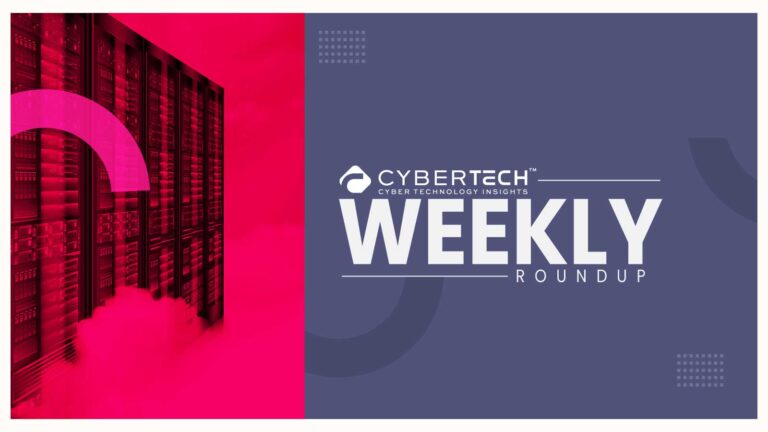In the ever increasingly hyper-connected world we live in today, cybersecurity is a strategic imperative. Organizations from banks to hospitals gather massive amounts of data and process it on a continuum, creating thousands of potential endpoints for malicious actors to exploit. As technology evolves, the methods of attack have evolved as well. Ironically, technology and devices that have traditionally been perceived as defenders against malicious actors, such as Artificial Intelligence (AI), are now being utilized as tools of compromise to attack organizations.
Malicious actors are able to automate attacks, survey large datasets, and develop highly credible phishing campaigns using AI. They are also able to generate synthetic content, such as deepfakes, to propagate misinformation against organizations. On the other hand, defenders are rushing to develop and deploy AI-based solutions to detect and defend against these sophisticated threats.
The stakes are high. Microsoft anticipates that attacks increasingly driven by AI technology will increase (>30% annually), but, more troubling, that attacks will not be limited to “network” based attacks. More specifically, these attacks will likely target critical infrastructure and national security (Microsoft Digital Defense Report 2024).
In this article, we will outline AI-driven threats, practical defense strategies, and the near- and distant future of AI in the field of cybersecurity, drawing actionable insights, real-world scenarios, and a humanized perspective that will help organizations best protect their digital assets.
Comprehending AI-Enabled Cyber Threats
The initial move towards developing a strategy to defend against a threat is to know it. AI-enabled cyber threats are not just the next iteration of a cyber threat but rather a transformation of it altogether. AI-enabled cyber threats take advantage of machine learning, natural language processing, and automation to find a vulnerability, avoid discovery, and scale an attack with little to no human intervention.
For example, a traditional phishing campaign could require weeks of lead time and manual creation of realistic emails, one at a time, to send to hundreds of users. AI-enabled phishing can create hundreds of emails in seconds, using publicly available data, social media profiles, and even past email habits, to create messages that appear legitimate. The result is higher click-through rates with a greater likelihood of a breach.
Key Types of AI-Enabled Threats
Automated Phishing and Social Engineering
AI can replicate human writing patterns remarkably well. By studying a target’s emailed writing style, communication patterns, and sometimes tone of voice, AI can generate phishing emails that could reasonably be mistaken for legitimate emails. According to a CISA study in 2024, AI-powered phishing attempts have a 50% higher chance of success than traditional campaigns.
Deepfakes and Synthetic Content
Deepfake technology is no longer merely relegated to entertainment or memesit has been weaponized and should be regarded as a cybersecurity risk. Attackers can create audio or video clips that are incredibly realistic of an executive, employee, or trusted partner. Consider for a moment the consequences of receiving a video call that looks credible enough from your CEO, instructing you to wire funds to an account that you now realize was controlled by a cybercriminal. The implications are dire, particularly in high-risk sectors like finance and healthcare.
Adaptive Malware and Ransomware
Traditional malware is predictable in the behaviors that it relies on to be detected, whereas Adaptive AI Malware adapts in real-time. In this case, an AI malware threat actively analyzes the target environment and modifies its behavior, IP, code, and payload to avoid detection. Adaptive AI Ransomware can halt its behavior after an antivirus scan is initiated, and only resumes once it determines that the environment is safe and the patrol is either complete or successful. Adaptive AI presents more challenges across the threat’s entire lifecycle and undoubtedly increases the efficacy to perpetrate the crime, let alone investigations or remediations.
Automated Vulnerability Scanning and Exploitation
AI can scan a network significantly faster than humans. AI can rapidly identify unpatched vulnerabilities, configuration issues, and compromised exposed endpoints. Once an AI detects a weakness or poor configuration, it can automatically exploit it, run command(s), or install the malicious payload without human intervention. AI has robotized the remediation process, which has essentially compacted weeks or months of remediation into hours and sometimes minutes.
AI-Powered Data Exfiltration
For most organizations, data will always be the most valuable asset. You should consider the effect on an organization when AI systems can scan for sensitive files, pattern recognition for user behavior, and, in turn, extract data without triggering alerts on traditional security systems. For example, ML can perform simulated activity while pilfering data from sensitive files, and our security systems in some organizations would not be able to detect and alert in time.
Real-World Example
In 2024, a multinational financial services organization was impacted by an advanced phishing attempt using AI. The phishing attack began by utilizing AI to analyze the LinkedIn profiles of the organization’s senior executives. The attackers established a baseline email communication style used within the organization and used AI to automatically generate emails that would appear to replicate the organization’s internal communication style. The phishing email was so sophisticated that it bypassed the organization’s email filters and almost completed a major wire transfer. This example illustrates the speed and accuracy of the abilities that AI can provide attackers.
Why Traditional Defenses are Not Enough
Current cybersecurity products firewalls, signature-based antivirus, and static intrusion detection systems, were developed in a world where standard, routine attacks occurred. Attacks powered by AI are not predictable; they change, evolve, and learn from defenses. Organizations must not only transition from reactive to proactive, adaptable, and AI-enabled defenses, as they faced in the case above.
Fact Check: In an ENISA (European Union Agency for Cybersecurity) report for 2025, it was predicted that almost 40% of cyber incidents against enterprises, in the next two years, will be associated with AI-driven attacks. ENISA Threat Landscape 2024
Countermeasures for Threats Delivered via AI
Organizations can offer countermeasures for AI-facilitated threats with a combination of technology, human awareness, and inter-organizational collaboration. AI-based security tools may help detect aberrations in real time through the analysis of large volumes of data and able to quarantine suspicious activity. Tools such as Cortex XDR AI offer security teams the ability to detect an active attack across endpoints, networks, and the cloud. Predictive models can also anticipate future attack vectors.
Keeping systems patched and updated is paramount. The incorporation of AI can enhance patch management by prioritizing patches or vulnerabilities and mitigating human error. Employee training will assist in employee vigilance, such as AI-based phishing simulations or gamified employee awareness programs.
Multi-factor authentication (MFA) with AI capabilities is becoming commonplace to add layers of security by establishing anomalies associated with user logins. Inter-industry collaboration utilizing Information Sharing and Analysis Centers (ISACs) is paramount to allow security teams to quickly understand emerging threats, much like the collaboration with healthcare mustered under duress when AI robots unleashed ransomware across a hospital in LA.
Finally, Zero Trust principles, AI-enabled threat intelligence, and trusted automation provide organizations with the power of vigilance to constantly monitor threats on behalf of a human being. Automated responses are used to stop suspicious activity, which mitigates against threats, and ensure smarter allocation of limited resources to build stronger defenses against evolving AI threats.
The Future of AI in Cyber Security
AI is evolving security from passive defense to active, adaptable protection. Autonomous systems will identify and respond to threats with no human touch, while behavioral analytic tools will detect anomalies in real time. Generative AI will simulate attacks, test defenses, and allow for iterative upgrades of security. Quantum-resilient algorithms will protect data against next-gen computing, and AI will contribute to developing and implementing these algorithms. Even with automation coming, humans will still play a key role in context, judgment, and strategy. Responsible and explainable AI will establish trust and accountability while ensuring cybersecurity aligns with organizational values. These advances will usher in the next age of intelligent cybersecurity.
Conclusion
AI presents a transformative shift to cybersecurity, creating a dynamic and proactive battlefield. By understanding AI-driven threats, such as automated phishing, deepfakes, and adaptive malware, and developing action plans using AI-powered defense, behavior analytics, MFA, and Zero Trust, organizations can adjust their approach ahead of attackers in a rapidly changing landscape. While the future points toward a truly autonomous packet threat detection, simulated generative AI threats, and quantum resistance possibilities, human oversight will continue to be necessary. The issue of a cyber threat strategy will continue to evolve, with vigilance, learning, and mutual collaboration defining the battlefields we face against cyberspace disruptions in an AI-driven world.
FAQs
1. What are AI-driven cyber threats?
AI-driven cyber threats execute attacks through machine learning and automation – such as phishing, deepfakes, and adaptive malware.
2. How can AI infer cybersecurity defenses?
AI provides behaviors that allow monitoring, anomaly detection, threat prediction, and even a fully automated response for better and faster response times.
3. Why is human oversight imperative?
AI enables performance at speed and scale, but people provide judgment, context, and strategic decision-making.
4. What does Zero Trust mean, and why is it important?
Zero Trust continuously authenticates all users and devices, allowing for less risk of unauthorized access.
5. How can an organization prepare for future AI threats?
Adopting AI-powered defense strategies, behavior analytics, AI threat simulations, quantum-resistant encryption methodologies, and opportunities for collaboration across industries.
For deeper insights on agentic AI governance, identity controls, and real‑world breach data, visit Cyber Tech Insights.
To participate in upcoming interviews, please reach out to our CyberTech Media Room at sudipto@intentamplify.com.







